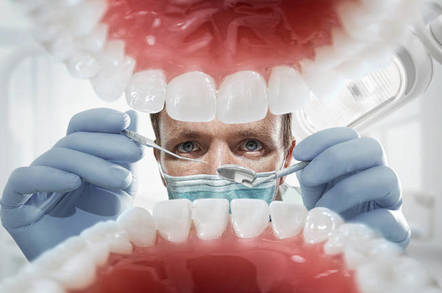Single-tooth implants can be used in people that are missing one or more teeth. An tooth implant is surgically put into an opening that is produced by your dentist in the jawbone. After the implant integrates (attaches) to your bone, it acts as a new “root” for the top that’ll be replacing your missing tooth. A crown (cap), that will be made to look like an all natural enamel, is attached to the implant and fills the space remaining in the mouth by the lacking tooth.

For this process to perform, there has to be enough bone in the mouth, and the bone has to be solid enough to put up and support the enamel implant. If there is inadequate bone, be may possibly must be included with a technique called bone augmentation. In addition, organic teeth and supporting tissues near where in actuality the implant will soon be located must certanly be in excellent health. There are many of reasons to displace a missing tooth. A distance between your teeth, if evident whenever you smile or talk, is just a cosmetic concern.
Depending on the place, some missing teeth might affect your speech. A missing molar might not be apparent when you talk or look, but its shortage can impact chewing. Whenever a enamel is missing, the biting power on the rest of the teeth starts to change. Whilst the mouthful changes to compensate for the missing enamel, there is a threat of additional stress on and discomfort in the mouth joints. If a lost tooth isn’t replaced, the surrounding teeth may shift. Dangerous plaque and tartar may collect in new hard-to-reach places developed by the shifting teeth. With time, this can lead to tooth corrosion and periodontal disease.
A dental implant is one selection for replacing a tooth. Implants are manufactured units which are put surgically in the upper or decrease jaw, where they work as anchors for replacement teeth. Implants are constructed with titanium and different components that are compatible with the human body lumineers.
The implant, which is constructed of titanium, is positioned in the top of or lower jawbone. The abutment could be manufactured from titanium, gold or porcelain. It’s attached with the implant with a screw. That part connects the implant to the crown. The repair (the portion that looks like a tooth) is really a crown, often manufactured from porcelain fused to a steel combination (PFM), but in addition could be an all-metal or all-porcelain crown. The crown is connected often to the abutment or directly to the implant. It can be screwed or cemented onto the abutment. If the top is screwed to the abutment, the mess opening is likely to be included with restorative product such as tooth-colored filling material (composite).
An implant looks and feels like an all-natural tooth. It suits firmly once you chew and speak. A single-tooth implant is just a free-standing model and doesn’t include therapy to the nearby teeth. With a dental implant, the surrounding teeth can remain untouched if they are balanced, and their strength and reliability might be maintained. The implant may support your bite and support prevent difficulties with the jaw.
What Happens During the Enamel Implant Method?
Treatment typically is a three-part process that requires many months. Your dentist might give the therapy, or you might be described a specialist – such as a periodontist, a prosthodontistor an common and maxillofacial surgeon – for several or the main treatment. In the first step, the dentist surgically places the implant in the chin, with the the top of implant slightly over the the top of bone. A screw is placed to the implant to stop gum tissue and different dust from entering.
The gum then is secured on the implant, where it’ll stay included for approximately three to six months while the implant fuses with the bone, an activity named “Osseo integration. “There could be some swelling and/or tenderness for a few days after the surgery, therefore pain treatment often is recommended to alleviate the discomfort. A diet of smooth foods, cool ingredients and hot soup usually is preferred through the healing process.
In the 2nd stage, the implant is discovered and the dentist binds an extension, named a “article,” to the implant. The gum tissue is permitted to treat across the post. After healing is complete, the implant and article will offer as the building blocks for the new tooth. In the final stage, the dentist makes a custom artificial tooth, named a “dental crown,” of a dimension, form, color and match which will combination with one other teeth. After completed, the top is mounted on the implant post.
